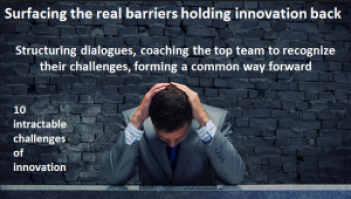
To build a pathway in order to enable more dynamic innovation capabilities one needs to go through Nine Stages.
These nine stages are, in my opinion, needed for developing an understanding of your innovation capabilities, so as to make them more dynamic and, as a result, to be at the top of your innovation game.
This “step process,” I believe, gets you to the point of understanding what innovation capabilities are a better ‘fit’ for the purpose, to deliver on your innovation needs on a consistent, repeatable, and evolving basis.
Building innovation capabilities take time; they are complex, highly structured, and multi-dimensional. Any structured approach to tackling innovation takes time and considerable commitment. Any learning involves sensing, seizing, and then transforming.
We are searching for what makes up the present system and what needs to be part of the future to create a ‘best’ innovation capability environment that is sustainable in the longer-term. Those that can be continually ‘orchestrated’ and constantly adapted to meet the strategic need.
We are striving towards a true ‘innovation coherency premium’ in design, knowing what makes up your core dynamic components. The outcomes are to know where to invest, what to dampen down and what aspects can evolve naturally and be ‘taken along’ – as you focus upon the ones that are more dynamic and relevant to your innovation needs. Continue reading “A pathway towards building your dynamic innovation capabilities”
 Here I am suggesting that there are ten intractable challenges that need breaking down and addressing to allow innovation to begin to really take hold
Here I am suggesting that there are ten intractable challenges that need breaking down and addressing to allow innovation to begin to really take hold